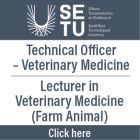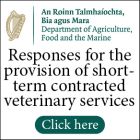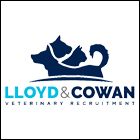Focus - January 2019
Calf health: the good, the bad and the ugly
Hazell Mullins BVM BVS, Abbeyville Veterinary Hospital, Cork, presents three calf health-specific case studies, highlighting the good, the bad and the ugly of all three scenarios, as well as treatment plans and outcomes
Case 1: Scouring Calves
Background
Called out to a 100-cow, spring calving dairy herd in the middle of a busy February. This was a firefighting-type situation as two calves had died overnight and five more were destined for a similar outcome.
The good
- There were raised, individual pens in the centre with small group pens around the outside of house.
- Sick calves were fed milk plus electrolytes in the middle of the day on two separate occasions.
- Colostrum management – considered to be good as they were very exact about colostrum administration.
- Three litres of colostrum were given by bottle as the farmer was nervous of tubing.
- Calves were fed own mothers’ or frozen, stored colostrum.
- Cows were vaccinated for Rotavirus/Corona Virus/E. coli and Salmonella.
- Halofuginone used on every calf as there was a history of cryptosporidium on the farm.
The bad
- Concrete – wet and covered in scour.
- Poor ventilation – air was ammonia-filled, the building where the calves were housed had very low ceilings leading to poor air speed and lack of fresh air.
- Housing was slightly over-stocked.
- No foot dips at the entrance.
- No measurement IgG to assess the quality of colostrum.
The ugly
- Five moribund calves.
- Two calves already dead and had not yet been submitted for post mortem.
- All calves had some form of slight scour.
Plan of action
- Performed a snap test on a scour sample which was positive for Cryptosporidium.
- Advised farmer to send freshest calf for post-mortem.
- Dripped all five calves with a bicarbonate spiked drip.
- Needed to consult with the halofuginone vet adviser regarding its efficacy.
Vet Adviser's Plan
- Take up to five serum tubes from healthy calves ideally between two and five days of age for zinc sulphate turbidity (ZST) testing.
- The next calf to scour, take a sample to send to regional vet lab, requesting testing for E. coli, Rotavirus, Coronavirus,
- Cryptosporidium, Salmonella and Campylobacter.
- Send next deceased calf for post mortem.
Results of investigations
Numerous diagnostic tests were performed, starting with a simple farm-side Snap test, which indicated cryptosporidium was the causative agent. On post-mortem and further tests at the regional vet lab, again cryptosporidium was found. To examine failure of passive transfer (FPT) in these calves, the ZST returned results of 80% FPT with readings between 13-19 units, implying that there was certainly room for improvement in colostrum management. ZST is not classed as the most specific test available but does give good indication of IgG levels in calves. Simple serum IgG tests could have been performed, also using a refractometer in practice. I am certainly guilty of not performing these often enough in practice. It involves taking a serum sample, spinning down or letting it rest, and placing a drop on a refractometer. If using a Brix refractometer, a value of over 8% is optimum or on conventional refractometer a reading greater than 5.5g/dL is optimum. In a Moorpark-based study in 2015, Hogan et al wrote that when compared to other tests available for FPT serum total protein was less specific and sensitive than other tests examined but is still very useful for in-house tests. Of course, there is major scope for farmers to use refractometers to measure colostrum before administration and storage with an optimal value of >22% Brix value. The latest data, from a 2018 Irish study by Todd et al, found a worrying figure of 54% of dairy calves having FPT. As vets, we need to encourage the use of these farm-side tests more.
But!
The elephant in the room in this case was compliance! We should never automatically presume that a product being used on farm is being used correctly. The halofuginone had only been used for four to five days instead of the recommended seven, and had only been started at three to four days of
age instead of after the first feed.
|
Treatment plan |
Case 2: Sudden Death in calves
Background
This was particularly interesting in terms of unusual disease outbreak that was low down on my differential list due to the farmer’s preventive measures. I was called to a large, 400-cow milking herd towards the end of April.
The good
- Very modern farm facilities.
- Individual calf pens used for the first week of life.
- All calves tubed with 3L of stored colostrum mostly within one hour of birth.
- New calf shed built recently with good ventilation, bright and draught-free, calves moved here at approximately two weeks of age.
- Automatic calf feeders in place and calves fed on good quality milk replacer (26% whey protein).
- Vaccination protocols were excellent – Leptospirosis, infectious bovine rhinotracheitis (IBR), bovine viral diarrhoea (BVD), Salmonella and Rotavirus/Corona all administered.
The bad
- High stocking densities, herd expanded in recent years.
- Poor hygiene in certain areas, especially around feeders.
- Individual pens used for the first two weeks were very near the sick cow pen.
- Staff under extreme pressure at the end of spring due to large numbers.
- Not measuring colostrum quality before storage or administration.
The ugly
- Called to group of four-to-six-week-old calves with sudden onset of inappetence followed by sudden death.
- Four calves had died overnight.
- Presented off feed the night before with poor appetite, ears down and lethargic.
- Injected by farmer with long-acting antibiotic for pneumonia to no avail.
- Examined four other similar calves in which I found high temperatures, harsh lung sounds on auscultation and a ‘touch’ of scour with no blood present.
|
Treatment plan |
Plan of action
- Snap tested the scour, which proved negative to all specified infections.
- Injected all calves with nonsteroidal anti-inflammatory drugs (NSAIDS) and continued farmers use of antibiotics.
- Dripped two calves who were unable to stand.
- Booked the freshest calve into the regional veterinary laboratory for a post mortem.
Results of investigations
The result of the post-mortem confirmed a diagnosis of salmonellosis due to Salmonella Dublin. Signs of pneumonia were found cranioventrally distributed involving abscessation of approximately 30% of the lungs. A large abscess was found in the urachal remnant cranial to the bladder and small white foci were found in the kidney, otherwise referred to as ‘spotted kidney’. S. Dublin was positively cultured from one of the lung abscesses present. On further enquiry from vets at the regional veterinary laboratory in Cork, Salmonella can present with a wide range of pathologies and there is not one finding that is diagnostic, culture is always necessary.
Case summary
Lessons to be learned from this case are that, despite vaccination, diseases can occur if the infection pressure is high enough. Typically, in Ireland, Salmonella vaccine is primarily used as an anti-abortion vaccine and calves are not generally immune, unless boosters are given closer to calving. The complex presentation of salmonellosis can be confusing to both famers and vets, with very general clinical signs and, unfortunately, not always the textbook blood red scour. After visiting Salmonella-positive farms in Denmark this year, they take their Salmonella prevention very seriously and their biosecurity is second to none. Separate wellingtons for vets/visitors on the farm is commonplace and disinfectant spraying of all personal protective equipment before arrival and departure of the farm is obligatory.
Case 3: Bloated Calves
Background
This case was not isolated to one farm outbreak or animal but was a reoccurring issue that I encountered throughout the spring of 2018. It can be frustrating to treat bloat as the etiology is a little complicated and there are no straightforward answers. The main principle of a bloat outbreak involves the excessive fermentation process of high-energy milk or milk replacer in the abomasum resulting in overproduction of gas. The most common bacterial involvement would be Clostridium perfringens A. due to poor storage of colostrum and subsequent bacterial overgrowth.
General bloat prevention recommendations:
- Bloat is worsened by slow abomasal emptying and the osmolality of the milk.
- Never feed more than 4L in one meal, instead try to aim for smaller, regular meals.
- Keep osmolality as close as possible to milk’s naturally occurring 12.5% solids, ie. make milk replacer at a rate of no more than 15% (150g mixed in 1L of water).
- Dehydration, addition of electrolytes or medications to replacers can slow abomasal emptying.
- Have a strict feeding routine every day.
- Be careful of iatrogenic vagal nerve damage due to poor tubing technique, this can interfere with abomasal emptying.
- Try to only tube a calf once, if at all possible.
Treatment
- 5ml penicillin, intramuscular.
- NSAIDS if in a lot of discomfort.
- Drench orally with 10ml penicillin, orally.
- If very distended, get farmer to ‘dog sit’ the calf and extend head to tube but this can be very unreliable.
- Skip one meal and give non-glucose containing electrolytes if necessary.
- Feed calves last to ensure correct oesophageal groove open.
- Recommend to farmers the key feeding points.
Curve balls
- Twists, ie. intestinal intussusceptions/twisted guts/obstructions/foreign bodies.
- Ruminal bloat – this usually occurs in older calves. Overleaf are pictures of a rumenotomy surgery I performed on a four-month-old bull calf.
Conclusion
For younger vets, the ‘text book’ case presentations that we study in vet school do not always translate to real-life situations and this is where help from more experienced vets and vet advisers is vital. Farm animal medicine keeps me on my toes constantly; even when you think you have sussed out a case, a curve ball can be thrown at you at the last minute. In general, calf health is the first building block to a successful farming enterprise and, as vets, we can share our knowledge to help farmers prevent disease and control outbreaks in their calves. As a recent graduate in practice over the past five years, I have realised that every single calf scour, pneumonia outbreak and miscellaneous sick-calf call has contributed to my overall knowledge base. The old saying ‘every day is a school day’ certainly rings true for anyone involved in the exciting world of veterinary medicine.
Acknowledgement
Hazell Mullins BVM BVS, presented at the 2018 CAVI Conference on the topic of calf health, ‘the good, the bad and the ugly’ of some of the real-life cases she has encountered.
Hazell would like to thank CAVI organisers for the opportunity to share her professional experiences, enabling her to reach out to younger vets who were in attendance and to help them overcome the pressures of calf health challenges in those first few years in practice.














